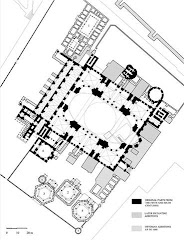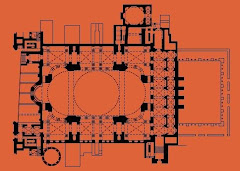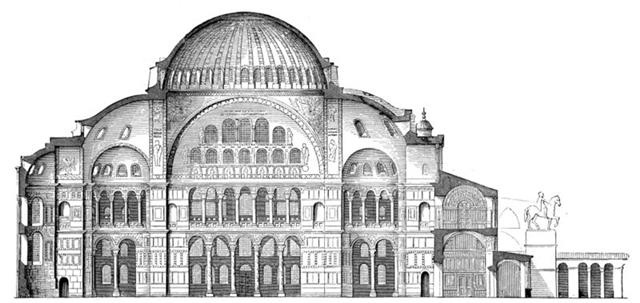Many existing elements of design reflect the ottoman culture within Ayasofia, such as the ornamentation, mosaiques, mouqarnaces, arches, materials and other fundamentals. Also taking into conception that ottoman structures where utilitiesed and recycled buildings from former existence, such as most old cultures and empires. Ottomans where known of such actions on a socio-political level at most; where it was omitted and portrayed as a sign of power and dominance to over through buildings and possessions of other existences. Hagia Sofia’s architect Sinan introduced his mind blowing theories in structural design and solutions concerning the central dome.
In conclusion Hagia Sophia has a long history and it took a long time to build Hagia Sophia. In the past centuries five years were considered to be short enough time build a monument like Hagia Sophia. Before the research we thought Hagia Sophia was just a regular church, but later we realized that Hagia Sophia is a beautiful monument and it has very interesting history. I learned that Hagia Sophia is a famous landmark in Istanbul, had many problems like damages and earthquakes. Hagia Sophia was rightfully named as one of the famous creations. It is one of a few outstanding buildings sitting on earth at this moment. The monumental size, and sheer scale is almost incomparable to any other. The concept reflecting human significance in comparison to the secular realm is evident in Hagia Sophia. Moreover reflecting a sign of power by the creation of such monuments, using such materials and technologies. Its structure is breath taking. It seems not to rest upon solid masonry but to cover the space as if suspended from heaven by a golden chain.
Sunday, December 13, 2009
Utilitarian
The building’s functions varied in parallel to time, meaning it took a slightly different method of functionality along with every transformation, but nevertheless remained within the secular domain a usage.
Structure
The structural systems roughly parallel the principal architectural components: the primary space of the nave and the enveloping secondary spaces of narthexes, aisles and galleries. Sustaining the dome and other high vaults over the nave are chiefly the main piers, the secondary piers and the buttress piers, and groups of arches spanning between these piers. The primary structural system certainly comprises all of these, as well as the dome and vaults themselves. The secondary systems might be defined as comprising all other structural elements of the church-proper. They thus include the arches and the vaults of the narthexes, and the main bays of the aisles and galleries, and all their supporting walls and columns that’s are not part of the primary system. The colonnades are regarded as parts of both systems- the side colonnades belonging chiefly to the secondary system.
Materials
To start with the materials, stone, bricks, and mortar makeup all the main elements of the above-ground structure-the piers and columns, and the arches, vaults, and dome. Substantial but far smaller amounts of iron and timber are found as cramps and ties.
Shifting to the structural use of stone and marble, stone is used chiefly in the piers. It is either limestone or greenstone-a local granite. The blocks vary in depth from 0.45m to 1m. Cut or broken bricks were used where this is necessary for bonding purposes, or where salvaged materials was used in repairs.
Shifting to the structural use of stone and marble, stone is used chiefly in the piers. It is either limestone or greenstone-a local granite. The blocks vary in depth from 0.45m to 1m. Cut or broken bricks were used where this is necessary for bonding purposes, or where salvaged materials was used in repairs.
Intro
Hagia Sophia is one of the largest churches in the Byzantine Empire and is the most famous landmark in Istanbul. In Greek Hagia Sophia means “Holy Wisdom.” Justinian I was the emperor who built Hagia Sophia. It was built between 532 to537.The architects were Anthemius of Tralles. The second architect is Isidorus of Miletus who came from near modern Turkey. They came from different places and built a magnificent church. The problems the architects faced were how to put it together in a dome shape, centralized unit with basilican and longitudinal. Questions has been asked about the way it has been built, the dome, the material, the structures and many more.
Personal Opinion
One of the worlds marvels, Hagia Sophia stills sits the earth as it always has for decades. A breath taking sensation just gazing upon such work, Fascination strikes within at first site. Previous projects were tempted but rarely before at such scales as one feels the insignificance upon entry. A structure so valuable rather than recreating; many cultures and religions walking that region at different times were obliged to make use of it. Situated as a crown in the middle of Istanbul the capital of Turkey.
Subscribe to:
Comments (Atom)
Plan






